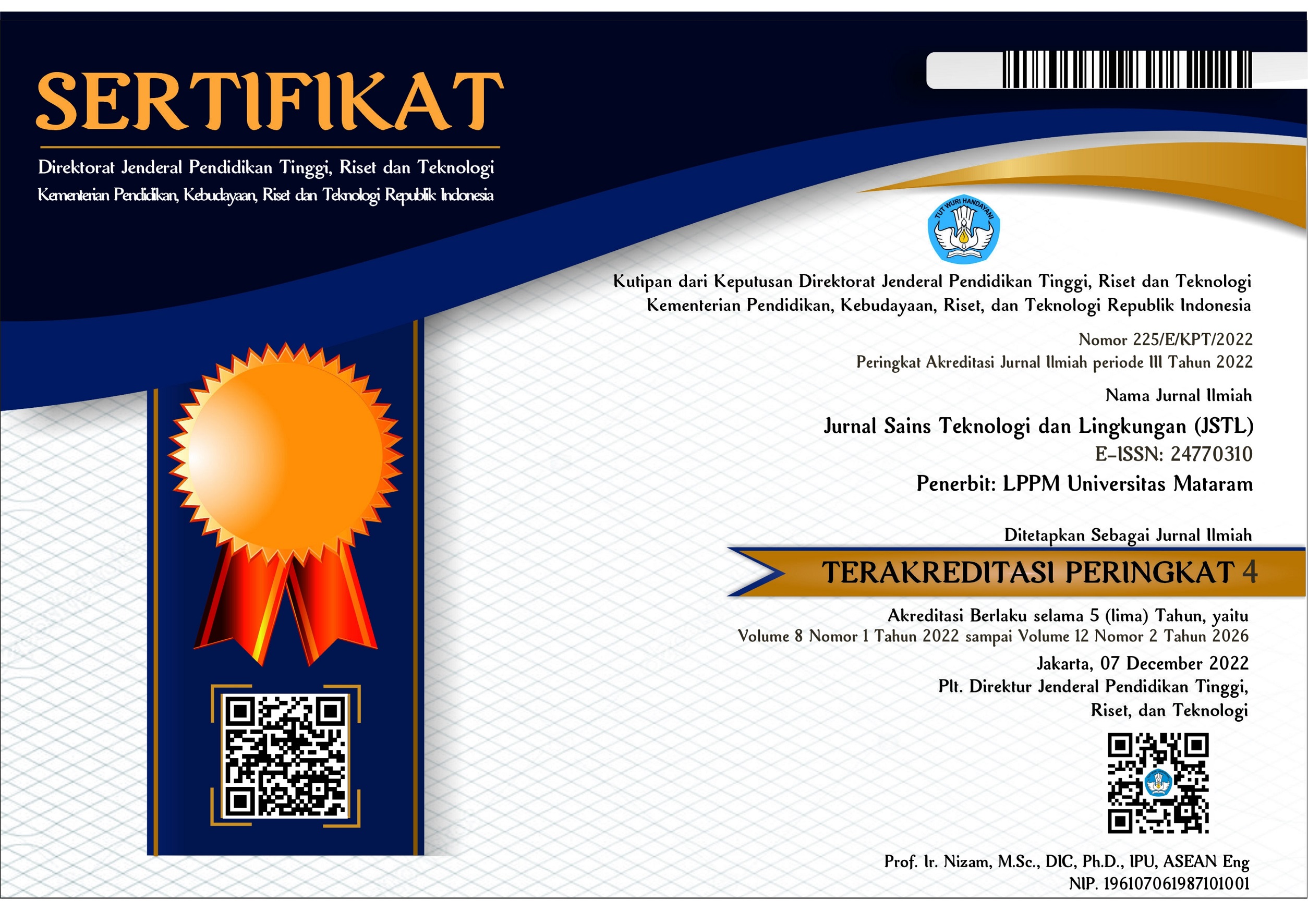Struktur Komunitas Gastropoda pada Kawasan Mangrove Pantai Gerupuk Lombok Tengah
Community Structure Of Gastropods in The Mangrove Area Of Gerupuk Beach Central Lombok
DOI:
https://doi.org/10.29303/jstl.v9i1.419Abstract
he purpose of this study was to determine the community structure and distribution pattern of gastropod in the mangrove area of Gerupuk Beach, Central Lombok. The field survey was conducted using the quadratic transect method and free collection in October-November 2022. The purposive random sampling was used in this study. The results showed there were 591 individuals Gastropod in all stations consisted of 4 species of Gastropod 7 families, namely Assimenia brevicula, Cassidula aurifelis, Cassidula nucleus, Littoraria carnifera, Littoraria angulifera, Littoraria scabra, Nerita undata, Cerithidea alata, Cerithidea quoyii, Telescopium Telescopium, Terebralia sulcata, Terebralia sp., Chicoreus capucinus and Nassarius reevanus. The highest abundance was found at station III with a value of 1.48 individuals per m2, where the highest abundance of gastropod species was Cerithidea alata. The diversity (H ') obtained from the three stations ranged from 1.476 to 1.996 which was categorized as medium level. Evenness index (E) from of 0.559-0.756 which were in the relatively even category. Furthermore, Domination index (C) of Gastropods range from 0.255-0.355 for low dominance. Gastropod distribution patterns in the Gerupuk Beach mangrove ecosystem are clustered and uniform. It is concluded that based on the biological indices the structure of the Gastropods community in the mangrove area of Gerupuk Beach it was in normal condition.Downloads
Published
2023-03-30
Issue
Section
Articles
License

This work is licensed under a Creative Commons Attribution-NonCommercial-ShareAlike 4.0 International License.


1.png)











